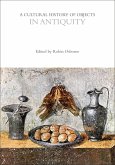This is the only comprehensive account of the Parthenon pediments in English and the first in any language since 1963. It serves as an up-to-date introduction to their study and includes new proposals for the restoration and interpretation of their composition. Debate on the Parthenon pediments has concentrated on the interpretation of individual figures, the restoration of the missing parts and the question of Roman repairs. The present study is based on autopsy and considers the evidence of technical details. It questions the attribution of certain familiar pieces and offers new suggestions for restoring the east pediment. All sculptures are illustrated, some with photographs taken especially for this book, and there are new drawings of the restorations proposed by the author. Chapter 1 is a general introduction to the study of the pediments. It includes an assessment of the documentation and a summary of stylistic and technical characteristics of the sculptures. Chapters 2 and 3 treat each pediment separately. The discussion of individual sculptures is incorporated in a continuous narrative which sets them within the context of the overall composition.
'Libraries supporting courses or research in these areas should own this book.'
Amy L. Wordelman, Religious Studies Review, 1994.
'...a useful monograph.'
Greece and Rome 1993.
'...fine new synthesis...tackles the major issues head-on...'
Ian Jenkins, Bvrlington Magazine, 1993.
'Her painstaking efforts have greatly enhanced the accesibility of these difficult sculptures to a wider readership than ever before and will certainly stimulate further research.'
Ian Jenkins, Journal of Hellenic Studies, 1994.
'Zusammenfassend darf man festhalten, daß die neue Publikation von Olga Palagia für dei Auseinandersetzung mit den Parthenongiebeln ein zuverlässiges "Handbuch" darstellt. Auch die Auswahl der 120 Bilder ist wohl überlegt und ausgewogen, vermißt man doch selten eine für das Verständnis des Gedankenganges wichtige Abbildung...Bewundernswert ist die signifikante und disziplinierte Auswahl der Gesichtspunkte und die klare und knappe Darlegung der Sachverhalte.'
Ernst Berger, Gnomon, 1996.
Amy L. Wordelman, Religious Studies Review, 1994.
'...a useful monograph.'
Greece and Rome 1993.
'...fine new synthesis...tackles the major issues head-on...'
Ian Jenkins, Bvrlington Magazine, 1993.
'Her painstaking efforts have greatly enhanced the accesibility of these difficult sculptures to a wider readership than ever before and will certainly stimulate further research.'
Ian Jenkins, Journal of Hellenic Studies, 1994.
'Zusammenfassend darf man festhalten, daß die neue Publikation von Olga Palagia für dei Auseinandersetzung mit den Parthenongiebeln ein zuverlässiges "Handbuch" darstellt. Auch die Auswahl der 120 Bilder ist wohl überlegt und ausgewogen, vermißt man doch selten eine für das Verständnis des Gedankenganges wichtige Abbildung...Bewundernswert ist die signifikante und disziplinierte Auswahl der Gesichtspunkte und die klare und knappe Darlegung der Sachverhalte.'
Ernst Berger, Gnomon, 1996.
'Libraries supporting courses or research in these areas should own this book.'
Amy L. Wordelman, Religious Studies Review, 1994.
'...a useful monograph.'
Greece and Rome 1993.
'...fine new synthesis...tackles the major issues head-on...'
Ian Jenkins, Bvrlington Magazine, 1993.
'Her painstaking efforts have greatly enhanced the accesibility of these difficult sculptures to a wider readership than ever before and will certainly stimulate further research.'
Ian Jenkins, Journal of Hellenic Studies, 1994.
'Zusammenfassend darf man festhalten, daß die neue Publikation von Olga Palagia für dei Auseinandersetzung mit den Parthenongiebeln ein zuverlässiges "Handbuch" darstellt. Auch die Auswahl der 120 Bilder ist wohl überlegt und ausgewogen, vermißt man doch selten eine für das Verständnis des Gedankenganges wichtige Abbildung...Bewundernswert ist die signifikante und disziplinierte Auswahl der Gesichtspunkte und die klare und knappe Darlegung der Sachverhalte.'
Ernst Berger, Gnomon, 1996.
Amy L. Wordelman, Religious Studies Review, 1994.
'...a useful monograph.'
Greece and Rome 1993.
'...fine new synthesis...tackles the major issues head-on...'
Ian Jenkins, Bvrlington Magazine, 1993.
'Her painstaking efforts have greatly enhanced the accesibility of these difficult sculptures to a wider readership than ever before and will certainly stimulate further research.'
Ian Jenkins, Journal of Hellenic Studies, 1994.
'Zusammenfassend darf man festhalten, daß die neue Publikation von Olga Palagia für dei Auseinandersetzung mit den Parthenongiebeln ein zuverlässiges "Handbuch" darstellt. Auch die Auswahl der 120 Bilder ist wohl überlegt und ausgewogen, vermißt man doch selten eine für das Verständnis des Gedankenganges wichtige Abbildung...Bewundernswert ist die signifikante und disziplinierte Auswahl der Gesichtspunkte und die klare und knappe Darlegung der Sachverhalte.'
Ernst Berger, Gnomon, 1996.


